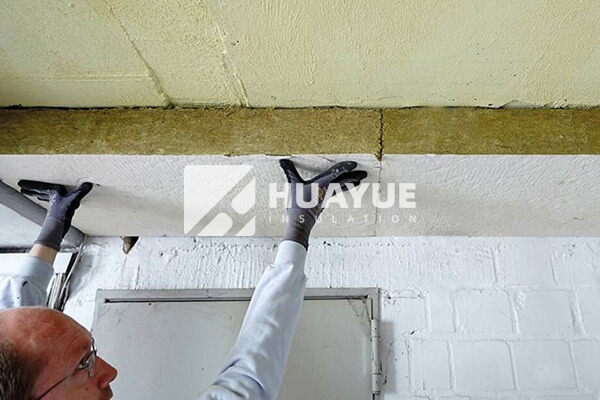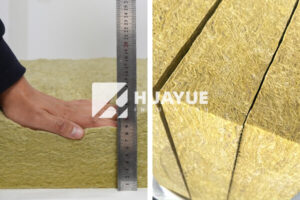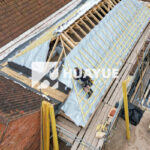Rock Wool Basement Ceiling Insulation: Is It the Best Choice for Your Project?
Basements are often cold, noisy, and hard to keep comfortable. If you want to make your basement more livable and energy-efficient, choosing the right insulation is key.
Rock wool insulation is excellent for basement ceilings because it blocks sound, resists fire, and stands up to moisture. This makes it a strong option for homeowners who want comfort and safety.

Basement ceilings face unique challenges. If you want to control noise between floors, stop drafts, or prevent moisture problems, insulation matters. Keep reading to find out if rock wool could be your best solution, what pitfalls to watch for, and how to make the smartest choice.
Should I put ROCK WOOL in a basement ceiling?
Basement noise, temperature swings, and dampness can make spending time downstairs uncomfortable. These problems frustrate many homeowners, especially when a basement is used for living space.
Rock wool is an effective choice for basement ceilings because it offers soundproofing and moisture resistance. It is not flammable, so it adds a safety layer, making your basement quieter, warmer, and safer.

If you want a material that does not absorb water, reduces sound transmission, and meets strict fire codes, rock wool is the way to go. I have recommended it to many project teams in the past. Compared to basic fiberglass, rock wool fibers are dense and springy, so they fit snugly in ceiling joists. This means fewer gaps and better coverage, which blocks out more sound from the floor above and helps manage odors or damp air.
You can see the benefit immediately during installation. Rock wool panels are firm and hold their shape, so you do not wrestle with sagging batts. If your basement houses a home theater, laundry, or even a quiet office, the added sound reduction can have a noticeable impact. Besides, if you are dealing with the risk of leaks or moisture, the fact that rock wool does not support mold growth is reassuring.
| Feature | Rock Wool | Fiberglass | Foam Board |
|---|---|---|---|
| Sound Blocking | Excellent | Fair | Poor-Moderate |
| Water Absorption | No | Can absorb | No |
| Fire Resistance | Very high | Moderate | Low-Moderate |
| Installation Ease | Rigid batts, easy fit | Compresses, sags | Needs cutting |
| Mold Resistance | Yes | Some types not | Yes |
| Typical Cost | Moderate | Low | High |
In short, for basements where you want peace of mind and comfort, I have found rock wool stands out.
What is the downside of ROCK WOOL?
No construction material is perfect. Insulation choices all come with trade-offs.
Rock wool can be more expensive, and installation may involve some minor irritation from fibers. You may also need protective gear to install it.

From experience, cost is a common concern when I recommend rock wool. The price can be higher than fiberglass, sometimes by 20-30%. For large jobs, this adds up. Still, many find the extra qualities of rock wool justify the expense over time since you need less maintenance and replacement.
The fibers themselves are not toxic, but like fiberglass, loose fibers can irritate your skin or eyes. When I work with it, I always wear gloves and a long-sleeve shirt. This is a small inconvenience during installation and does not affect long-term performance.
While rock wool is rigid and easy to fit, cutting it for odd joist sizes can take some effort. It is best handled with a sharp insulation knife or even a serrated bread knife. Be ready for a little clean-up, as small fibers can break off during the process.
Though rock wool handles moisture well, it does not provide a vapor barrier. If you plan to use rock wool in a humid basement, you may need to pair it with a separate vapor barrier installed on the warm side of the insulation.
| Downside | Notes | Potential Solution |
|---|---|---|
| Higher Cost | 20-30%+ over fiberglass | Long-term savings on maintenance |
| Itchy During Install | Minor irritation | Protective clothing, gloves |
| Time to Cut Panels | Needs sharp knife for precise cuts | Pre-measure, use suitable tools |
| No Vapor Barrier | Needs separate barrier in some basements | Combine with vapor barrier |
So, with thoughtful preparation and the right gear, these drawbacks are manageable. The end result is often worth the trouble.
Can you use ROCK WOOL insulation in a ceiling?
Basement ceilings pose unique technical demands. Homeowners often ask if rock wool is suitable or allowed.
You can safely use rock wool in basement ceilings. It is code-approved, moisture-resistant, and good at blocking noise between floors.
Building codes in most countries, including the US and Germany, recognize rock wool as a safe ceiling insulation option. In my experience, it holds up well against sound and moisture in unfinished or finished basements. Its structure resists drooping and compression, so it maintains its shape, even between joists with wires or pipes.
Installers can easily friction-fit pre-cut batts between ceiling joists. The dense nature of rock wool keeps it from sagging over time. This reduces the need for netting or extra supports. If your ceiling height is low or you need to hide ducts and wires, rock wool’s flexibility is an added benefit.
For basements with ceiling access panels or frequent repairs, removable rock wool batts make things easier. You can lift them out and put them back without tearing fragile batts or losing coverage. This can speed up maintenance, especially when access to plumbing or wiring is needed.
A simple table of suitability:
| Ceiling Application | Works with Rock Wool? | Notes |
|---|---|---|
| Unfinished Joists | Yes | Friction-fit, no supports |
| Drywall or Drop Ceiling | Yes | Fits above tiles/panels |
| Around Ducts and Pipes | Yes | Cut to fit, easy to adjust |
| Humid/Partial Flood Risk | Yes | No fiber breakdown |
Rock wool proves its value as a ceiling insulation material in many real world basement projects.
Which insulation is best for a basement ceiling?
Owners and builders want the smartest investment. There are several insulation types for basement ceilings, and each excels in different ways.
Rock wool stands out when you want soundproofing, fire resistance, and water durability. Fiberglass is good for budgets. Foam board offers the highest R-value per inch but can be costlier and harder to fit around pipes.
Here is a quick comparison, based on jobs I have supervised:
| Insulation Type | Pros | Cons | Best Use Case |
|---|---|---|---|
| Rock Wool | Sound, fire, moisture resistant | Cost, need for protective gear | Finished or semi-finished basements |
| Fiberglass | Inexpensive, widely available | Loses shape, absorbs water, lower R | Budget projects, dry areas |
| Foam Board | High R-value, easy vapor barrier | Hard to fit, expensive | Where moisture is extreme |
| Spray Foam | Air seal, highest R | Very expensive, needs pro install | Small, irregular areas |
If you want a balance between comfort and long life, rock wool is reliable. For the strictest budgets, fiberglass works, but you need to watch for water problems. Foam board and spray foam have specialty uses, but can be overkill for most basement ceilings. For most homes and small commercial spaces, I continue to recommend rock wool for its simplicity, performance, and value over time.
Conclusion
Rock wool offers efficient, reliable insulation for basement ceilings, balancing fire resistance, soundproofing, and moisture durability for most needs and budgets.
You may also be interested in:
Ready to Get Started?
Get in touch with our experts for personalized solutions tailored to your needs.
Get Free QuoteLatest Articles


What Does Density Mean for Rock Wool Insulation?
Nov 25, 2025

Does mold grow on fiberglass insulation?
Nov 25, 2025
Let's Work Together
Ready to take your business to the next level? Get in touch with our team of experts and let's discuss how we can help you achieve your goals.
Get Free Solutions




